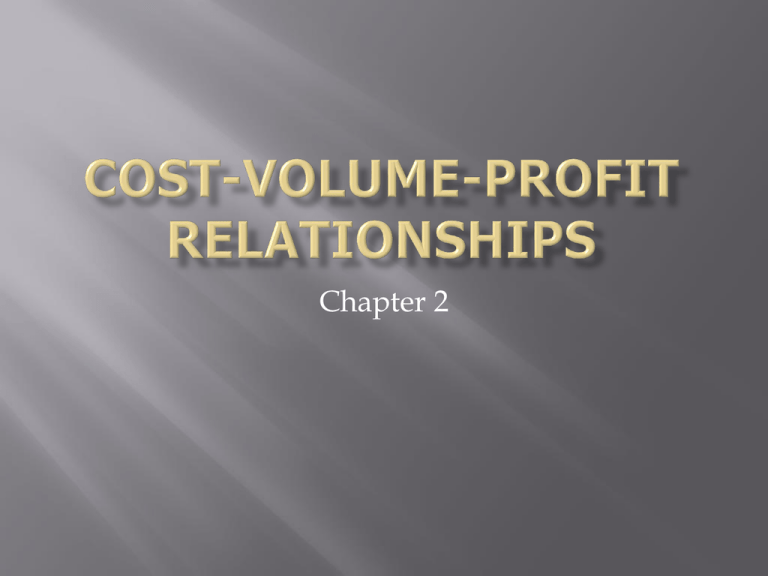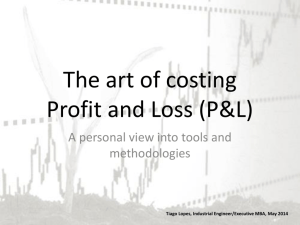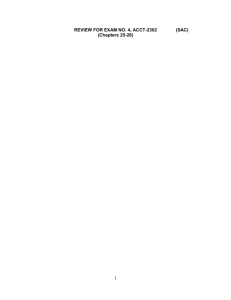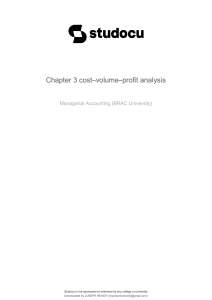Cost-Volume-Profit Relationships
advertisement

Chapter 2 Cost-volume-profit analysis examines the behavior of total revenues total costs operating income as changes occur in the output level selling price variable costs per unit fixed costs. Changes in the level of revenues and costs arise only because of changes in the number of units produced and sold (one revenue driver and one cost driver). Total costs can be divided into a fixed component and a component that is variable with respect to the level of output. The behavior of total revenues and total costs is linear (straight-line) in relation to output units within the relevant range (and time period). The unit selling price, unit variable costs, and fixed costs are known and constant. Assumes a single product or that the sales mix when multiple products are sold will remain constant as the level of total units sold changes. All revenues and costs can be added and compared without taking into account the time value of money. Operating income = Total revenues from operations - Cost of goods sold - Operating costs Net Income = Operating income + Non-operating income (e.g. investment income) – Non-operating costs (e.g. such as interest cost) – Income taxes The only numbers that change are total revenues and total variable cost. Contribution margin = Total revenues – Total Variable Costs Unit Contribution Margin = Unit Selling Price – Unit Variable Cost Contribution margin percentage = contribution margin ratio = Unit Contribution Margin ÷ Unit Selling Price ;the sales level at which operating income is zero. At the breakeven point, sales revenue minus variable costs equals fixed expenses. Total revenues = Total costs Operating income = Unit sales price – Unit Variable Cost – Fixed costs × units sold × units sold Operating income + Fixed costs (Unit Sales Price – Unit Variable Cost) × units sold Unit sales needed = (Target Operating income + Fixed costs) ÷ (Unit Sales Price – Unit Variable Cost) Plot a line for total revenues and total costs. The breakeven point is the point at which the total revenue line intersects the total cost line. The area between the two lines to the right of the breakeven point is the profit area. Financial accounting income statement emphasizes gross margin. Revenues – Cost of goods sold = Gross margin – Operating costs = Operating income Operating Income + Non Operating Income: Income from affiliates, Interest income -----------------------------= Earnings Before Interest & Taxes Interest Expense -----------------------------= Earnings Before Taxes - Tax Expense -----------------------------= Net Income -







